
The Goths were Germanic people who played a major role in the fall of the Western Roman Empire and the emergence of medieval Europe.
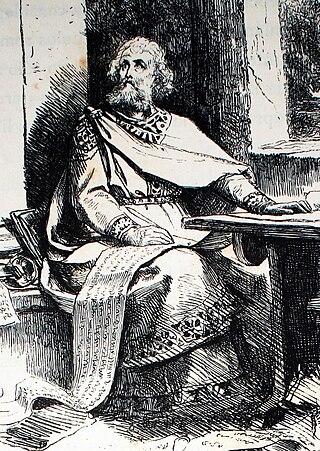
Ulfilas (Greek: Ουλφίλας; c. 311 – 383), known also as Wulfila(s) or Urphilas, was a 4th century Gothic preacher of Cappadocian Greek descent. He was the apostle to the Gothic people.
The 360s decade ran from January 1, 360, to December 31, 369.
The 370s decade ran from January 1, 370, to December 31, 379.
Fritigern was a Thervingian Gothic chieftain whose decisive victory at Adrianople during the Gothic War (376–382) led to favourable terms for the Goths when peace was made with Gratian and Theodosius I in 382.
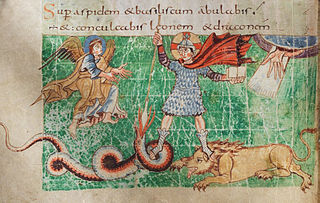
The Germanic peoples underwent gradual Christianization in the course of late antiquity and the Early Middle Ages. By AD 700, England and Francia were officially Christian, and by 1100 Germanic paganism had also ceased to have political influence in Scandinavia.

April 11 - Eastern Orthodox liturgical calendar - April 13

July 30 - Eastern Orthodox Church calendar - Aug. 1
Gothic Christianity refers to the Christian religion of the Goths and sometimes the Gepids, Vandals, and Burgundians, who may have used the translation of the Bible into the Gothic language and shared common doctrines and practices.

Alexander of Jerusalem was a third century bishop who is venerated as a martyr and saint by the Eastern Orthodox Church, Oriental Orthodox churches, and the Roman Catholic Church. He died during the persecution of Emperor Decius.

Sabbas the Goth was a Christian martyr venerated as a saint.
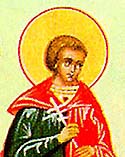
Amphian is venerated as a martyr by the Catholic Church and by the Eastern Orthodox Church. He is said to have died during the persecutions of the Emperor Galerius on April 2 in or around the year 305. In the Eastern Orthodox calendar, his feast thus falls on April 2, along with Aedisius, who is sometimes called his brother.
The Thervingi, Tervingi, or Teruingi were a Gothic people of the plains north of the Lower Danube and west of the Dniester River in the 3rd and the 4th centuries.
Christianity began as a Second Temple Judaic sect in the 1st century in the Roman province of Judea, from where it spread throughout and beyond the Roman Empire.
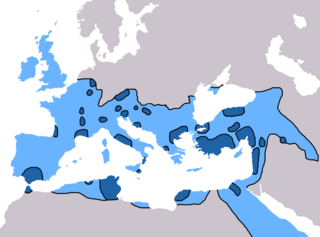
Christianity in the 4th century was dominated in its early stage by Constantine the Great and the First Council of Nicaea of 325, which was the beginning of the period of the First seven Ecumenical Councils (325–787), and in its late stage by the Edict of Thessalonica of 380, which made Nicene Christianity the state church of the Roman Empire.
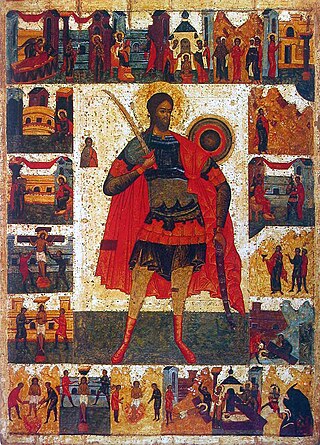
Nicetas is a Christian martyr of the 4th century, venerated particularly in the Eastern Orthodox Church. His feastday is 15 September. Nicetas was of Gothic origin, living during the 4th century AD. His life spanned the years of Emperor Constantine the Great's sole rule. He belonged to the upper social class of his people. Nicetas was instructed in Christianity by Theophilus of Gothia, a converted bishop, between 325 and 341 AD.
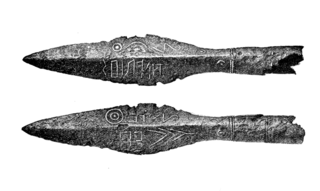
Gothic paganism or Gothic polytheism was the original religion of the Goths before their conversion to Christianity.
Aoric was a Thervingian Gothic king who lived in the 4th century. Aoric was son of Ariaric and father of Athanaric, he was raised in Constantinople, where a statue was erected in his honour. He was recorded by Auxentius of Durostorum leading a persecution of Gothic Christians in 347/348. Herwig Wolfram noted that "alliteration, variation, and rhythm in the line of names Athanaric, Aoric, Ariaric resemble the 'ideal type' of Hadubrand, Hildebrand, Heribrand". He considered the similarities and comparison suggested that all three kings were members of the Balti dynasty.
Winguric or Wingurich, also known as Wingureiks, Wingourichos, also Jungeric was a Gothic ruler (reiks) under the Thervingian chieftain Athanaric who played a prominent role in the Gothic persecution of Christians. Around 375 he burned twenty-six Gothic Christians to death in the Crimea, who were later sanctified as martyrs by the Christian church.
Atharid was a Gothic chieftain under the Thervingian leader Athanaric. He was the son of Athanaric's sub-king Rothesteus, and played a leading role in the killing of the Christian saint Sabbas the Goth.










